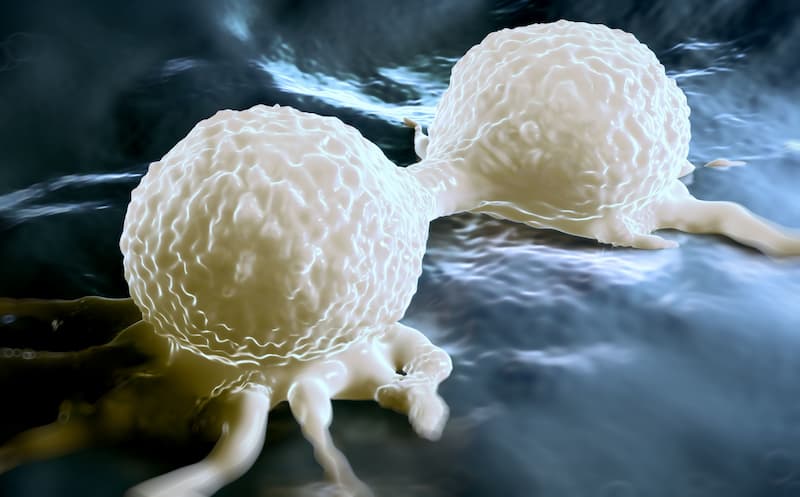Adjuvant Atezolizumab Plus Chemo Does Not Add Survival Benefit in TNBC
The phase 3 IMpassion030 trial did not find a survival benefit when atezolizumab was added to chemotherapy after surgery for patients with triple-negative breast cancer.
"The results of this final analysis are important because they show that including the immunotherapy drug atezolizumab alongside chemotherapy does not help when it’s given to patients following surgery," according to Heather McArthur, MD.

The addition of atezolizumab (Tecentriq) to post-surgery chemotherapy did not show a clinical benefit for patients with triple-negative breast cancer, according to results from the phase 3 ALEXANDRA/IMpassion030 trial (NCT03498716) presented at the 14th European Breast Cancer Conference.1
Patients were monitored for 32 months, with no improvement noted for those given atezolizumab after surgery compared with those who were not given atezolizumab. A rate of recurrence or death of 12.8% was noted in those given atezolizumab vs 11.4% for those who weren’t (HR, 1.11). Additionally, no benefit was noted in subgroups such as those who had the disease spread to the lymph nodes and those with PD-L1–positive cancer.
Safety also remained consistent with other previously reported results. Serious adverse effects were noted in 54.3% of patients who were given atezolizumab vs 44.1% who weren’t.
“This is a large international clinical trial looking at treatment for patients with triple-negative breast cancer. The results of this final analysis are important because they show that including the immunotherapy drug atezolizumab alongside chemotherapy does not help when it’s given to patients following surgery. By extension, this also highlights the importance of [managing] triple-negative breast cancer with chemotherapy and immunotherapy prior to surgery, as per the current standard of care,” Heather McArthur, MD, a Komen Distinguished Chair in Clinical Breast Cancer Research at UT Southwestern Medical Center, said during the presentation.
Results were previously reported during the 2023 San Antonio Breast Cancer Symposium (SABCS).2 Patients were assessed and randomly assigned to either arm A with atezolizumab plus chemotherapy, where patients were given induction treatment from weeks 1 to 19 and maintenance from weeks 21 to 51. In arm B, patients were given chemotherapy only. The primary end point was invasive disease-free survival (iDFS) in the intent-to-treat (ITT) population, and secondary end points included iDFS in subpopulations, overall survival (OS), and relapse-free interval.
A total of 2199 patients were randomly assigned, with 1101 in the atezolizumab arm and 1098 in the chemotherapy alone arm. At the time of the analysis presented at SABCS, 975 and 963 patients in each respective arm were still on treatment or in follow-up.
The overall median age was 53 years, 82.8% were younger than 65, 50.8% of patients were White, and 37.5% were Asian. At baseline, 81.0% of patients had an ECOG performance status of 0, and 19.0% had a performance status of 1. The most common histology was ductal (73.6%), and most patients had poorly differentiated disease at screening (60.9%). The primary tumor stage was pT1-pT2 in 94.1%, and axillary node status was 0 in 52.3%. Additionally, 52.4% of patients had a mastectomy vs 47.6% who had breast-conserving surgery.
In the ITT population, the rate of iDFS events in the atezolizumab arm was 11.5% vs 10.2% in the chemotherapy arm (HR, 1.12; 95% CI, 0.87-1.45; P = .37). Futility was declared because the HR crossed the boundary of less than 1 at the interim analysis. The median follow-up was approximately 25 months.
The rate of iDFS events in the PD-L1–positive subgroup was 9.8% vs 9.3% between both arms (HR, 1.03; 95% CI, 0.75-1.42). The OS rate was 5.5% in the atezolizumab arm and 4.5% in the chemotherapy arm (HR, 1.20; 95% CI, 0.82-1.75).
Treatment-emergent AEs (TEAEs) occurred in 99.4% of patients, with grade 3/4 treatment-related AEs in 48.6%. AEs leading to discontinuation occurred in 11.3% of patients. The most common AEs between the atezolizumab and chemotherapy arms, respectively, included alopecia (66.1% vs 65.2%), nausea (49.8% vs 47.5%), and anemia (36.8% vs 37.5%). Immune-mediated AEs included rash (42.7% vs 30.3%), hepatitis of diagnosis and lab abnormalities (32.8% vs 25.7%), and hepatitis with lab abnormalities (31.3% vs 25.2%).
References
- McArthur H, Bailey A, Sajl S, et al. Adjuvant chemotherapy with or without atezolizumab for stage II and III triple-negative breast cancer: final analysis of the ALEXANDRA/Impassion030 phase 3 trial. Presented at the 14th European Breast Cancer Conference; Milan, Italy; March 20-22, 2024. LBA1
- Ignatiadis M, Bailey A, McArthur H, et al. Adding atezolizumab to adjuvant chemotherapy for stage II and III triple-negative breast cancer is unlikely to improve efficacy: interim analysis of the ALEXANDRA/IMpassion030 phase 3 trial. Presented at the 2023 San Antonio Breast Cancer Symposium; San Antonio, TX; December 5-9, 2023. GS01-03